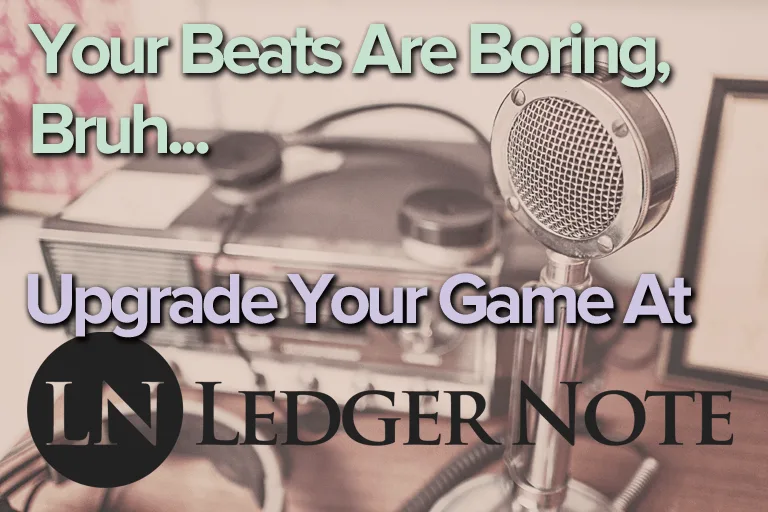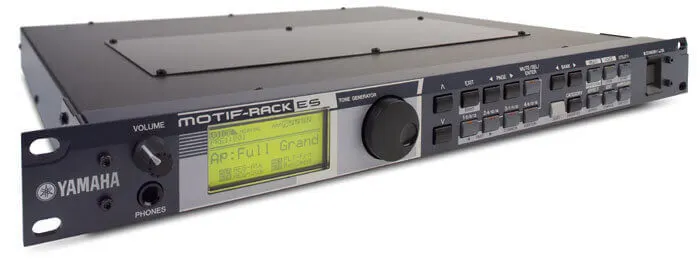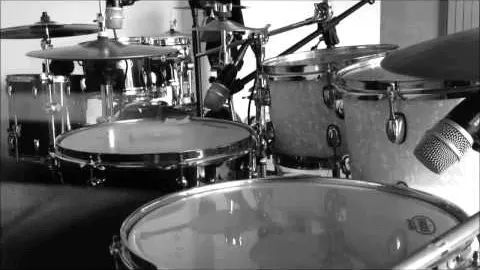
Not a day goes by where I don’t hear some non-hip-hop listener say something stupid like, “Listen to this crap. I could make this beat! There’s nothing to it. I ought to be a millionaire.”
If you dig into the online beat making community for even ten minutes you’ll realize that a lot of these haters actually attempt to become producers, along with other aspiring instrumentalists who are fans of the genre.
Not a lot of them are millionaires or are landing their beats on major label records, and it’s not for a lack of trying. They are shopping their beats everywhere in hopes that someone will hear their indisputable talent and “put them on.”
The problem is that most of these guys simply aren’t talented. Their beats downright suck. The same reason that made you think you could emulate and copycat the greats is the same reason you can’t.
You don’t have the ear. You don’t notice the subtleties. You haven’t studied a lick of music theory. And trust me, everyone can hear that you’re using (a bootleg copy of) Fruity Loops. Let me put it to you bluntly:
Your Beats Are Flat Out Boring (But We Can Fix That)
Remember back when you first started and thought “Man, the pro’s beats are so simple. I can do that in a heartbeat.” And you’ve been pumping out simple beats since, because you mistook their simple orchestration for a simple arrangement.
They are doing things with three sounds that you couldn’t do with 15, and that’s why they are selling exclusives for $100,000 a pop and you’re leasing your tracks off of Soundclick for $1.00 per download.
Here’s how we’re going to fix your problem throughout this article, by talking about what makes a good beat:
- Sound Fonts
- Music Theory
- Mixing & Mastering
- Orchestration
- Arrangement
Add all of these together and you have an equation that will take you up a level, no matter where you’re already at. As you read along, really consider you’re own situation and think about how to apply these suggestions. They aren’t really optional if you want to make serious scratch, so pay attention.
Sound Fonts – Magically MakE Better Beats
In all likelihood, you’re like me when I got started. You’re young and ballin’ on a budget. And as we all know, trying to purchase a piece of software and then upgrading the sound fonts can cost an arm and leg.
That’s why so many people are still rocking the same versions of Fruity Loops and Cool Edit Pro 2 from the mid-90’s that was floating around. But I’m going to tell you right now, that’s not going to cut it.

Nothing can improve your beats faster than using higher quality samples, one-shots, and sound fonts. You can take any of your old instrumentals, swap out the sounds, and immediately have a better beat on your hands without changing anything else.
Outboard Rack Sound Banks
Your options are to either learn how to use a synthesizer or plugin to create the sounds you want (you’ll be very limited), or you’ll need to start buying and collecting sound fonts and samples. If you can play the keys at all, any old keyboard is going to have a midi input/output on it that you can control your sounds from.
This means you could save money and score an outboard sound bank from one of the killer keyboards out there. Take a look at the Yamaha Motif (pictured above), Korg Triton, or Roland Fantom, all of which were big winners back in my day.
Sound Fonts and Sample CD’s
Every piece of common software is easily distinguished by it’s default sound fonts. They are never good until you hit the Logic Pro or Pro Tools level. This means you’re going to have to invest in some extras.
Depending on your style, you can get real-deal samples of live instruments, or you can buy classic packs like the 808 set, etc. The options are nearly endless. My suggestion is not to get a ton. Figure out your style and go from there, based on the clientele your focusing on.
Narrowing your focus to South, West, East, MidWest, or Dubstep, just as examples, can greatly increase your chance of success. But it also keeps you from having 100,000 sound fonts you can’t possibly sort through and choose from. Get a core set of sounds you can become familiar with and go from there.
Music Theory – The Key to a Good Beat
Sometimes people break the mold. You have guys like Mr. Sche in Memphis banging out heaters all day while sequencing on Fruity Loops and still using some default sounds, landing beats for guys like 8 Ball and Al Kapone.
You know why his beats still bang? Because he knows music theory. If anything is going to set you apart, it’s this. Yes, it sucks at first.
You’ll literally have to bust out a text book or read online and treat it like school. You’ll have to study and do homework. But it’s an investment into your business so get it done.

The main thing lacking in every amateur beat maker’s tracks is a lack of chord changes and song sections. Talk about boring. Any time someone asks me how to make a good beat, I ask them if they know what a chord progression is. And you can guess the answer.
Most rap beats only have two chords for the entire song. They’re extremely simple, but you can’t even pull that off without the basics of music theory. Slap in some chord inversions and now we’re talking, because you have to make simplicity interesting.
Switching keys inadvertently (and half the time not even having a key), having instruments not harmonize each other, over-producing in an attempt to make up for other lacking areas, and tons of other problems can all be solved with a rudimentary understanding of music theory.
I’m talking Music Theory 101 levels (great book there) that can up your game in as little as a week with some quick studying. Read the other Ledger Note article I just linked to and you’ll notice an immediate change in the quality of your instrumentals.
Mixing & Mastering – Making Beats Sound Better
Mixing and mastering are items you’ll want to leave to the professionals ultimately, but knowing the slightest amount about it can help improve the chances of your beats getting picked up by artists.
Mixing
Amateur beats usually sound like a muddy, slurred mess due to the complete absence of any mixing. They’ll have kick drums and bass lines bleeding into each other, and other instruments colliding into catastrophe.
The tiniest bit of mixing with EQ’s, compression, and some panning can fix most of these issues, moving your tracks from crazy cacophony to a polished shiny turd. But if you’re track is actually good, some mixing can show its true potential as a masterpiece.
It’s not hard and we’ve already compiled some mixing tips for you here. Don’t ignore this part, its a true make-it-or-break-it aspect, because first impressions count the most.
Mastering
Another issue is mastering. Folks will slap a mastering plugin with some default setting on their master out and call it a day, and then be confused when someone hears the track and comments on all the clipping and distortion.
Don’t even attempt to master your tracks. Just add compression where needed on individual sounds and watch the needles to see if you’re peaking anywhere. If you are, just lock all of the tracks together and turn them down together to maintain your mixing balance.
Orchestration – Better Instruments Equals Better Beats
These next two parts, orchestration and arrangement, are technically parts of music theory but deserve their own attention in this article. Both can graduate your beat making skills to the next level if done right.

When you think of the word orchestration, think of a literal orchestra and the maestro waving his stick around. He’s telling certain people to play their instruments at certain times based on their seating position (mixing and panning).
He tells specific ones to stop while others start, and when he really wants to blow your mind, he’ll bring them all into the mix at once, but they sound great together because they are utilizing harmony and off-setting each other’s rhythms. You need to be doing the same thing with your beats.
Your goal is to try and use the entire range of human hearing, from the bass frequencies up to the sparkly highs. To pull this off, you need to be familiar with the main frequency range of various instruments and sounds. You’ve heard enough music to know how to do this without having the specific Hertz frequencies memorized. Use your ears!
Basically, this means that you don’t want 5 instruments all smashing along in the bass range. Have a bass, a kick drum a bit higher in frequency, a snare higher, then human vocals, and then a couple of others a bit higher and panned around supporting the lead melody.
The difference in quality and enjoyment is very obvious once recognized. Starting with an appropriate choice in instrumentation makes the rest of your job much easier.
Syncopation
We are talking about rap or R&B for the most part here, I’m assuming. That means there’s a large emphasis on the drums and the pattern in which they thump out their rhythm.
The most boring thing you can do is use all down beats. It’s the number one reason your beats are boring. When you study music theory, you’ll learn about something you can already feel, which is strong beats and weak beats.
In common time, which is four over four or four beats per measure, you’ll intuitively count the beats out like…
ONE, two, THREE, four, ONE, two, THREE, four…
You’ll notice, and I’ve laid it out visually above, that the 1 beat is the strongest, followed by the 3 beat. Two and four are heard as weak beats. But if you move into 8th notes and 16th notes, two and four are felt even stronger.
Syncopation can be thought of as having your drums hit on the weak beats instead of the strong. This makes the listener feel the weak beats while anticipating the strong, which creates a sense of driving forward through the song (aka not being boring).
To get a sense of this, lay out a loop where you drop the kick on the 1st beat and then hit the snare on the 2 and 4 beats. Now go back in, stretch your view to 8th or 16th notes.
Now purposefully drop kicks anywhere but the strong beats (1, 2, 3, and 4). Now you’re creating hip-hop instead of thumping club-techno, heavy metal, or 80’s rock.
Sparse or Full
Notice as you listen to various songs that they usually follow one of two paths: they are either very sparse in their instrumentation or they are very full sounding. Something like “Drop It Like It’s Hot” by Pharell was sparse, where as something like Dr. Dre’s “Kush” is very full. Check out the difference below:
The above track is an example of a sparse beat, while the example below is an example of a full beat.
Make this decision from the start so that you don’t have orchestration issues. Notice how Dre’s choice of instrument sounds don’t clash with each other, due to them each having a designated frequency range that don’t butt heads. More examples of full beats were Kanye’s early Midwest style beats.
If you choose to go sparse, you have to keep things interesting by using unique sounds. Pharell chose to use silly mouth sounds mixed with synths to a strange juxtaposition. But it worked.
Another trick is to keep your beat and rhythm the same, but change instruments, such as swapping out snares during the chorus or switching kicks halfway through a verse. The main trick to making full or sparse beats work has to do with the following section on arrangement.
Arrangement – Understanding Hip Hop Beat Structure
By the time you consider arrangement, you’ve chosen your instrumentation already. So the question becomes not which instruments to use, but when to use them. You can’t just start smashing them all at the same time or you’ll just have a mess.
If they all play, in unison, the same lead melody the singer is singing, then you don’t have a song. You need to choose what purpose each instrument serves, such as harmonizing the lead melody, supporting it’s rhythm, or bringing in the hype only in the chorus, etc.
Music is as much about space and emptiness as it is filling that space. The ears and mind need a chance to “breathe” and process what it’s hearing.
That’s why less is more a lot of the times, and songs that achieve a fullness are doing it with reverbs and delays more so than extra instruments. Over-flooding someone’s senses won’t get their attention, it’ll just have them turn your song off, much like we always mute the TV during loud commercials.
Custom Drum Fills
Two of the funnest parts of making beats is creating custom fills for the ends of sections and after you receive the vocals back from the rapper or singer. In regards to custom fills pre-vocals, go ahead and loop your song out with consistent rhythms that are predictable and repetitive.
This gives the user something to lock into so they can focus on the vocals and lyrics. With familiarity you risk being boring for being memorable, but thankfully it opens up a chance to create even more interesting “ear candy” with fills.

Now that you have your basic layout fleshed out with repeating rhythms that your listener will become familiar with, you can choose specific moments in the song (usually transitional moments) to accentuate with custom fills. The classic moment is when you’re moving out of the end of a verse and into the chorus.
You can drop in a nice snare fill that perks up the ears of the listener. It gets them paying closer attention again and alerts them that something is about to happen (in this case, moving into the chorus). Now you have interest and familiarity together while keeping transitions from being jarring, sudden, and upsetting.
When you get vocals back, a fun trick is to listen along for any unique words, parts of the lyrical message, or off-setting rhythmic parts. You can help these parts shine even more by creating custom drum fills beneath them and even bringing in (or taking out) other instruments to draw more focus to it. Don’t overdo it or it’ll lose it’s power and upset the familiarity you’ve established.
Dynamic Breathing
Remember earlier when I said you have to let a song breathe? In addition to song sections changing feel and melodies switching around, you need to also vary the level of intensity throughout a song.
By being a bit clever, you can achieve this in lots of different ways. One of my favorites is to drop into half-time or double time drums.
It’s rarely seen in hip-hop but you can even change tempo or time signatures. The most useful for this type of music is dropping out and bringing back different instruments. It can be as simple as dropping out high-hats for a section, dropping out the bass for a measure, or dropping out the snare.
By dropping instruments out, you can maintain familiarity, and then when you reintroduce it the strength of the initial impact makes it seem new and improved. You’ll have managed to breathe some fresh air into a song all by tricking the brain of the listener into playing catch-up and then forgetting about an instrument.
You can do this with any instrument during any portion of the song, but choose wisely and don’t just go willy-nilly deleting portions of tracks.
That’s How to Make Better Beats…
Here’s what I recommend. Choose any instrumental of yours. Maybe your favorite one, or your weakest one. Then reread this article and apply one of the suggestions above to it. Then another.
Work your way through all of them and finally render another full-bounce of the track, then forget about it. Wait a week and then listen to the original version a few times.
Finally, listen to your new and improved version and get ready to be blown away at the advancements you’ll have made. Once you feel you’ve internalized these new concepts, you’ll start applying them to all of your new beats and suddenly find that you’re being contacted by more and more new clients. Your reputation will start climbing, but don’t stop here.
This is just a starting point for all of the tricks you can learn. Keep studying more music theory and applying your new knowledge. If you aren’t studying, your competition will be, and it’s a zero sum game. Either your beats get placed on the album, or someone else’s does. Get to work and keep grinding!